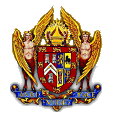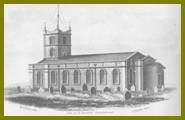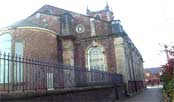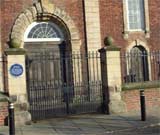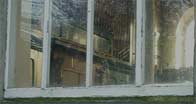
| | HOME | |
|
|
|
|
SOME DISTINGUISHED CHARACTERS AND INTERESTING PLACES SUNDERLAND PARISH CHURCH
Fig.1 Church of Holy Trinity in 19th Century This Church was designed by William Etty of York, built in 1719 and consecrated in September of that year by the Bishop of London. The Church and its adjacent Rectory were expressly built because of the rising population in the Port of Sunderland area. The Royal Arms and also those of Lord Crew then Bishop of Durham embellish the ground floor gallery. It is interesting to note that in 1803 Thomas Wilson, the schoolmaster turned engineer who was the architect and partner in the building of the Iron Bridge, supervised the renewal of the roof and several windows, the expense of which was defrayed by the sale of the lead from the original roof. The remains of some of the Rectors of Sunderland are said to be interred in the ‘Rector’s Vault’ but burials in any other part of the church were prohibited. However, because of the rising population the original cemetery had been extended on many occasions and at that time a considerable part of the town moor was being marked out for future burials. Garbutt, when describing the many tombs and headstones before him, was moved to remark:- “that in the reflections suggested by a contemplation of the many memorials of mortality, we are made sensible of the short and transitory state of human existence”. On another occasion, in the churchyard of Bishopwearmouth Rectory, and possibly in a lighter frame of mind, he noted the following inscription on a gravestone:- Under this stone his friends may see ***** You have read above that the Church of Holy Trinity was built in 1719 because the population of Sunderland was rising so quickly, built three quarters of a century before the ancient Phoenix Hall and the world renowned Sunderland Iron Bridge were constructed. Because Sunderland did not have a Town Hall in its own right, the Church in its early years served virtually in that capacity, as well as in its spiritual role. Of course, from a masonic viewpoint, it also played a very colourful role on that unique day of 24th September 1793 when the Town’s dignitaries paraded the short distance from Phoenix Hall, accompanied by the town’s freemasons, to pray and give thanks before processing on to lay the foundation stone for Rowland Burdon’s unique Iron Bridge!! Given the City’s current restoration of many of Sunderland’s fine buildings it is to be hoped that the Church of Holy Trinity will be restored and that Wearsiders and others will be aware of the significance of the connection between Phoenix Hall, the Church of Holy Trinity and the world famous Iron Bridge.
On 24th September 1793 after William Henry Lambton, Provincial Grand Master of Durham had opened a Grand Lodge in Phoenix Hall with 200 masons they were met at the gate by the magistrates, commissioners and other dignitaries and in procession made their way to this door of Sunderland Parish Church. The masons formed two lines and the dignitaries entered the Church to take up their seats. The masons then entered the Church and proceeded to the gallery (see stairs to gallery below)
Interior of Church not accessible on 14th November 2004 |
Approved by the United Grand Lodge of England | Legal Notice
